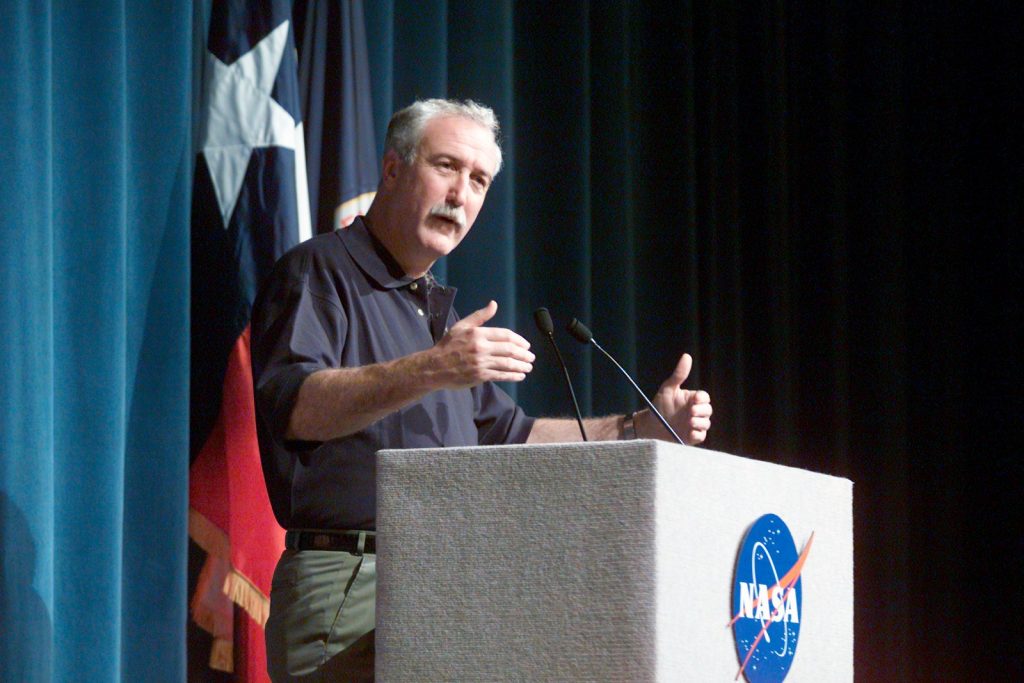O’Keefe, a Maxwell School alumnus, OVMA supporter, and Syracuse University Professor, was at the helm 20 years ago when Columbia broke apart while returning from a space research mission.
By Jessica Youngman

The Columbia shuttle was scheduled to land at the John F. Kennedy Space Center in Cape Canaveral, Florida, on the morning of Feb. 1, 2003, after completing a successful 16-day research mission.
Joining the families of the ship’s seven-member crew on the tarmac that morning was alumnus Sean O’Keefe ’78 M.P.A. He was the head of NASA at the time, and says the excitement was palpable.
The first orbiter to fly in space with its maiden voyage in 1981, Columbia had drawn international attention for its 28th mission. It brought a sense of optimism following the 9/11 terrorist attacks, and its crew included the first Israeli astronaut.
The landing countdown, which began just before 9 a.m., did not end with the tell-tale sonic booms—made when a shuttle crosses the sound barrier on its return to earth. “The shuttle was on track to land, but the time came and went, and everybody knew this was not normal,” O’Keefe remembers. “The mood turned from excitement to confusion.”
O’Keefe and others gathered on the landing strip did not know that debris from the shuttle had already begun to rain down across a 200-mile stretch of Texas and Louisiana.
The Columbia tragedy is part of Sean O’Keefe’s lesson plan at Syracuse University’s Maxwell School of Citizenship and Public Affairs. A University Professor since 2014, he teaches graduate courses in the Public Administration and International Affairs (PAIA) Department. He’s also engaged in Maxwell’s Washington, D.C., programs at the Center for Strategic and International Studies, a think tank where he is a distinguished senior advisor.
“I don’t hold a lot back,” he says of his teaching about the experience. While reliving the tragedy takes a toll, he says it is important, and it “starts with the proposition that on that day we failed.” He adds, “Personally, I failed as a leader to have caught or understood the management dimensions that caused this to happen.”
Columbia’s accident was caused by a breach in its left wing inflicted during liftoff by a breakaway chunk of foam insulation. But in its 2003 report, the Columbia Accident Investigation Board cited NASA’s culture as having a contributing role.
